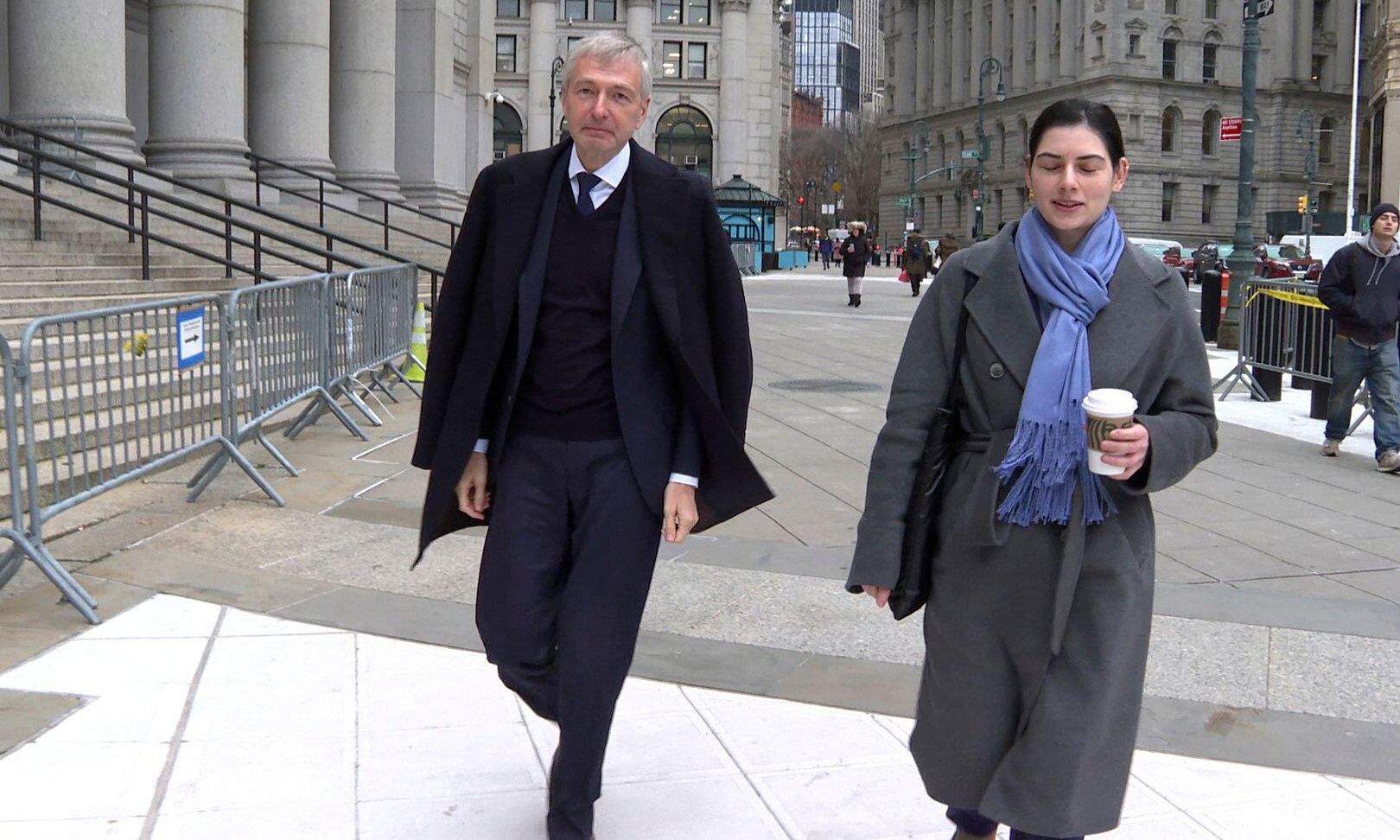The Russian oligarch Dmitry Rybolovlev arriving at court in New York on 9 January © Associated Press / Alamy Stock Photo
It may be strange to pity the Russian billionaire Dmitry Rybolovlev, given his testimony in the civil trial between him and Sotheby’s last month. In his lawsuit against the centuries-old auction house, the oligarch lamented the art market’s unique idiosyncrasies: “It’s not only a matter of money. It’s important for the art market to be more transparent, because as I’ve already mentioned, when the largest company in this industry [Sotheby’s] is involved in actions of this sort, clients don’t stand a chance.”
Fighting back tears, Rybolovlev described his work relationship with the Swiss dealer Yves Bouvier: “When you trust people, when a person is like a member of your family, there’s a point in time at which you begin to completely and utterly trust a person.”
I cannot comment on the validity of Rybolovlev’s claims against Sotheby’s or whether the billionaire businessman should have known better, but no one would argue that issues of transparency and trust are unfamiliar to today’s art market.
It has always been common to be taken at your word in the art market’s extravagant dealings. For example, the scholar Bernard Berenson’s opinion on the authenticity of a work was not just an opinion, but a verdict, with enormous consequences for the value of a painting. We know now that Berenson was as much an art historian as an art dealer, with alleged secret dealings with Joseph Duveen that often saw his 5% regular commission for acquisitions boosted another invisible 20% for the buyer. In her 2013 biography of Berenson, Rachel Cohen wrote: “This clear conflict of interest has thrown into doubt many of his authentications for Duveen and a number of these have been shown, through careful examination, to have become more optimistic, therefore considerably more valuable, once he was working for Duveen.”
Providing indisputably reliable information on artworks is a prerequisite for effectively transacting in the art market. But in the case of Berenson, as in the claims brought by Rybolovlev, even the potential of backroom collusion erodes the truly independent nature of scholarship on which buyers are meant to rely.
In my former life as an art dealer, my largest client was the German businessman Hasso Plattner, with whom I shared a deep fondness for French Impressionism. Initially together, and later with a specialist team, Plattner built one of the largest collections of French Impressionist works, now housed in his privately founded Museum Barberini in Potsdam. Unlike Rybolovlev’s description of his dealings with Bouvier, Plattner did not rely on his trust in me. I quickly learned that to be trusted unconditionally was a precarious position to hold. Instead, proving the independence of the scholarship and research I provided to Plattner was the greatest priority in our dealings. For years, I would leave no catalogue raisonné, institutional literature or historical document unturned in order to compile iron-clad justifications for the price of each work.
For individuals without such means, navigating the opaque informational asymmetries between experts, sellers and buyers can be an immense undertaking. It is my strong belief and the mission of my company Artory that, when used correctly, blockchain technology helps to address issues of transparency, accountability and independent scholarship in the art market. The technology—introduced to me through Plattner’s broad tech network—can be used to aggregate and protect the expert-validated artwork information, documentation and transaction data into a fully auditable, certified asset token.
Blockchain tokenisation is an invaluable tool for navigating—and ultimately expanding—the art market. By carrying out the complicated task of securing transaction data and exceptional domain expertise in a single source of truth, these tokens provide individuals and institutions with the credible resources needed to effectively participate in the art market without the need to wholly trust any one individual.

